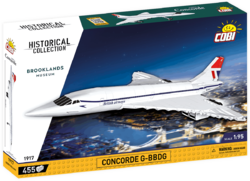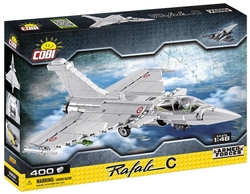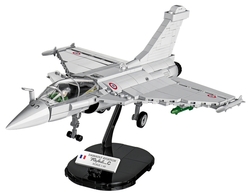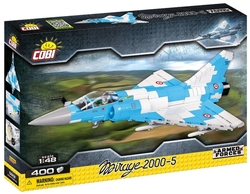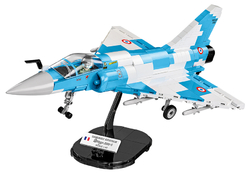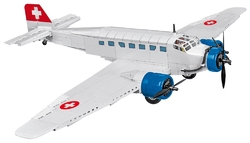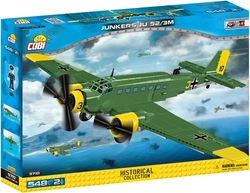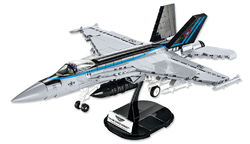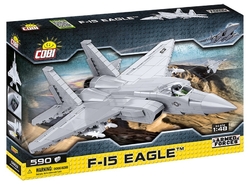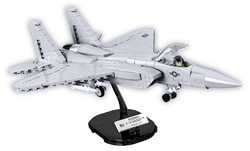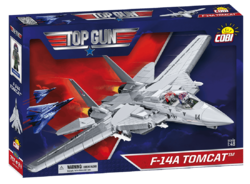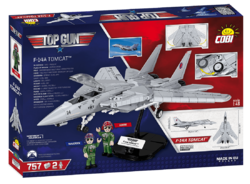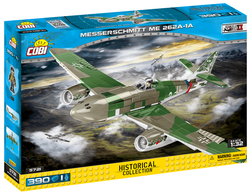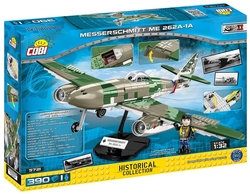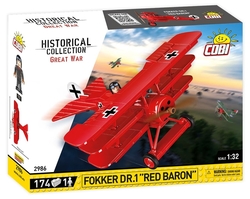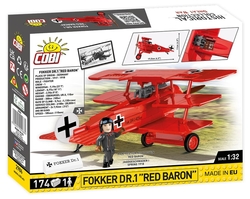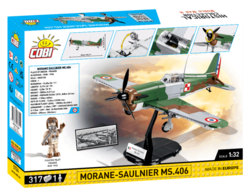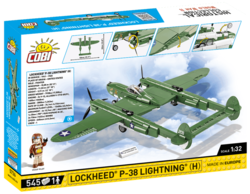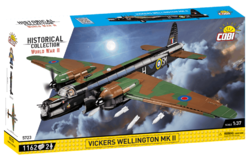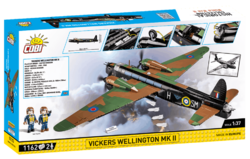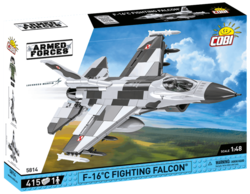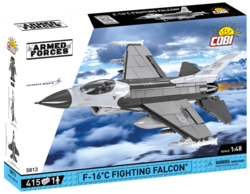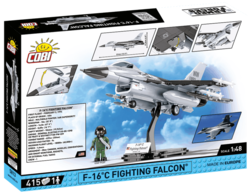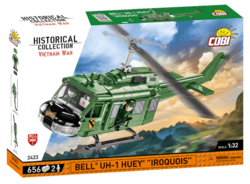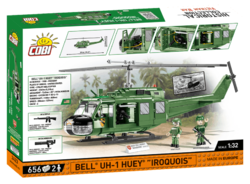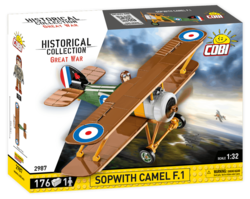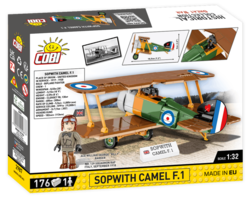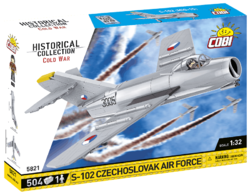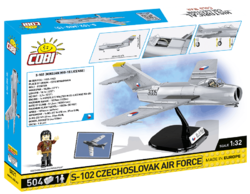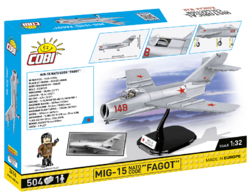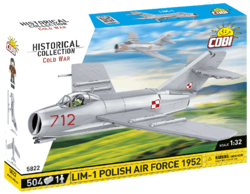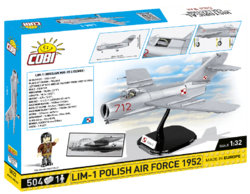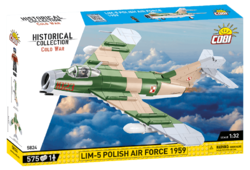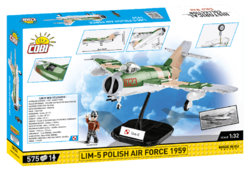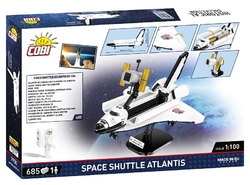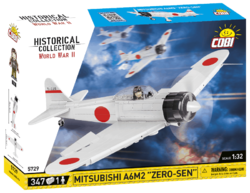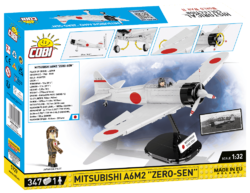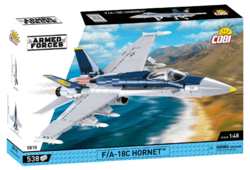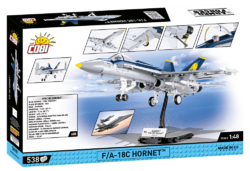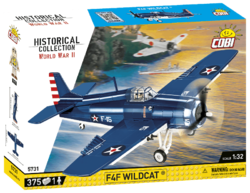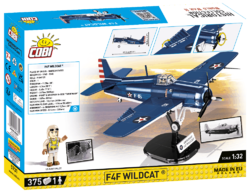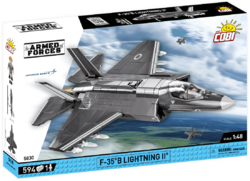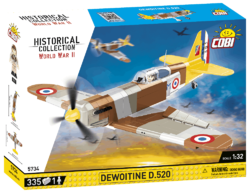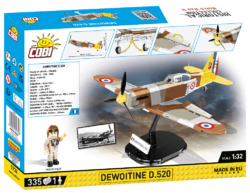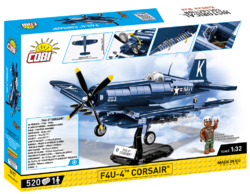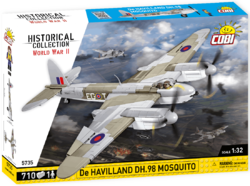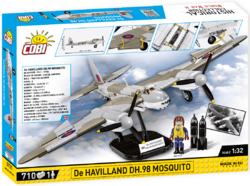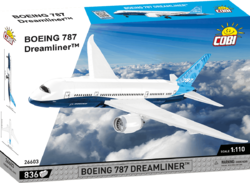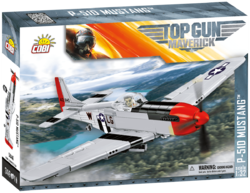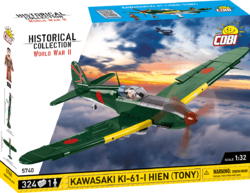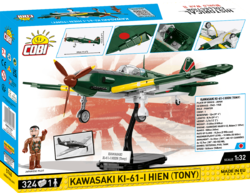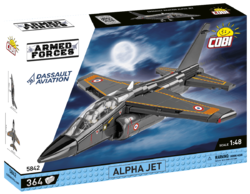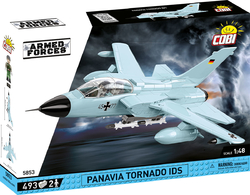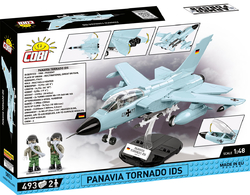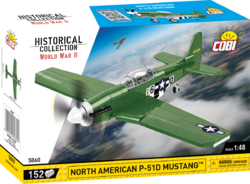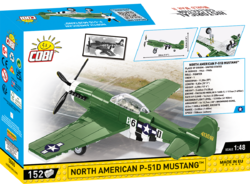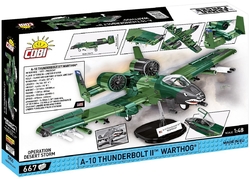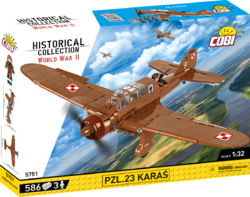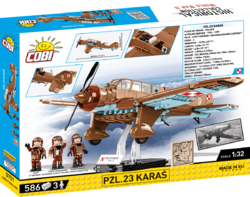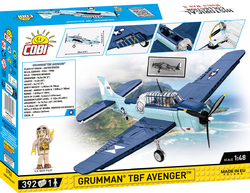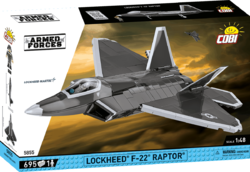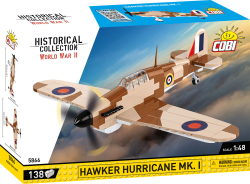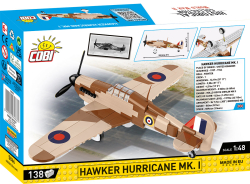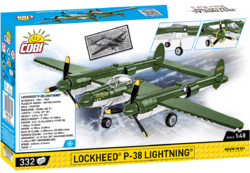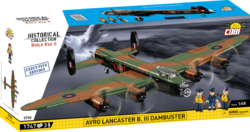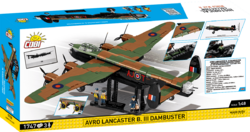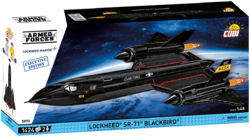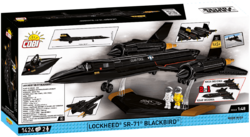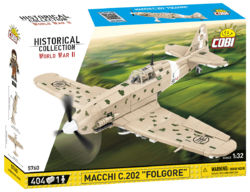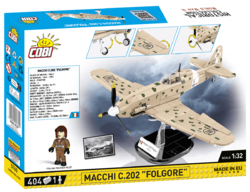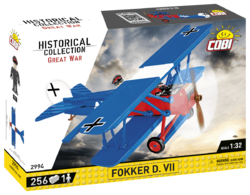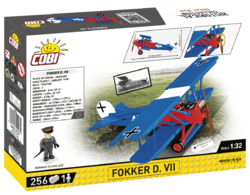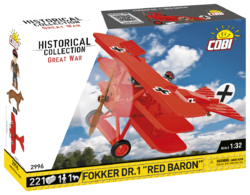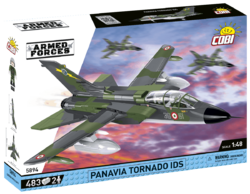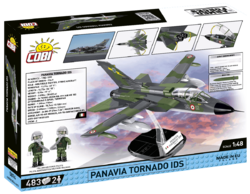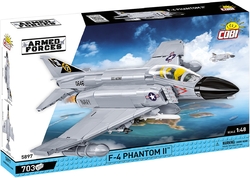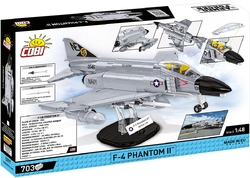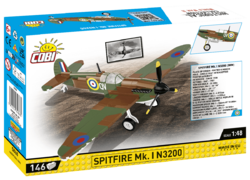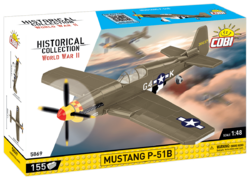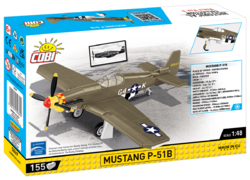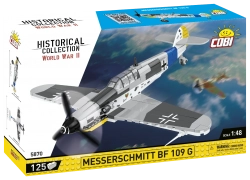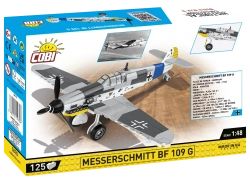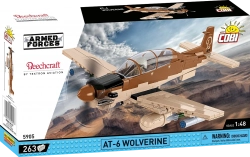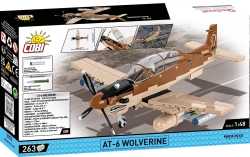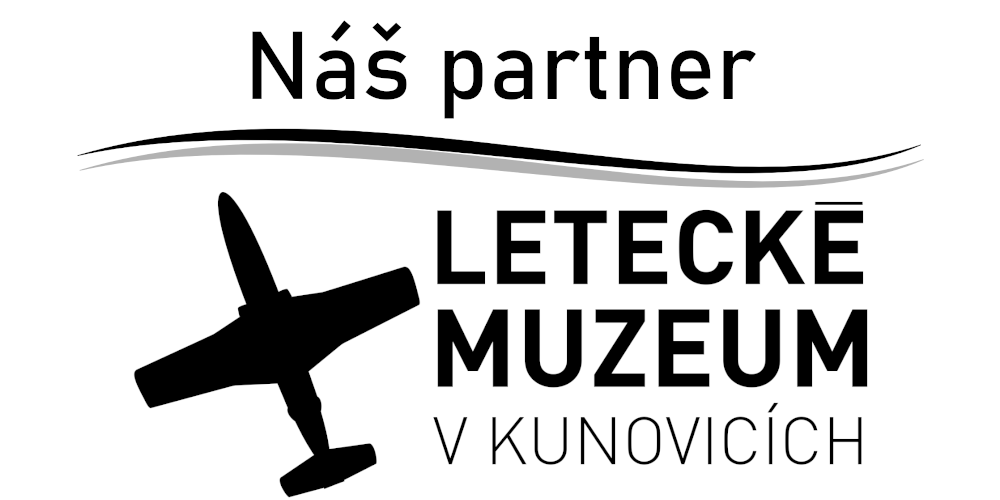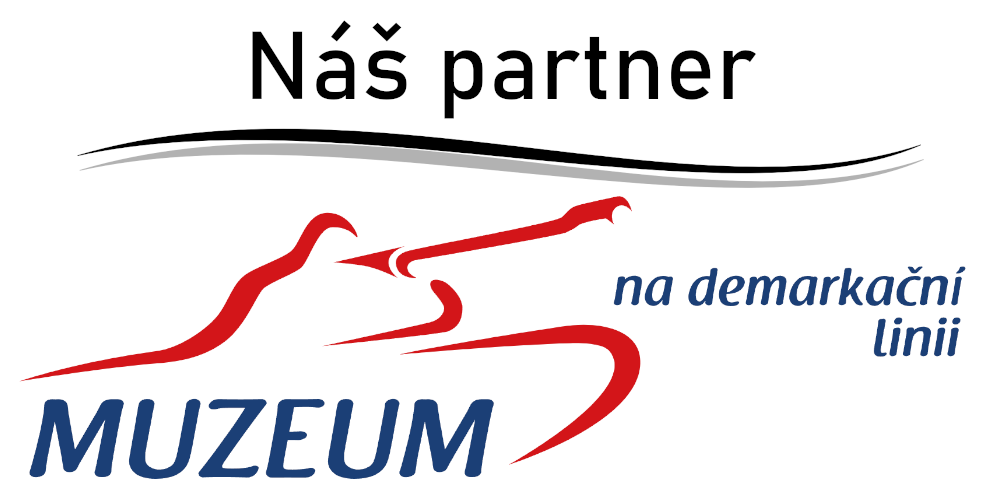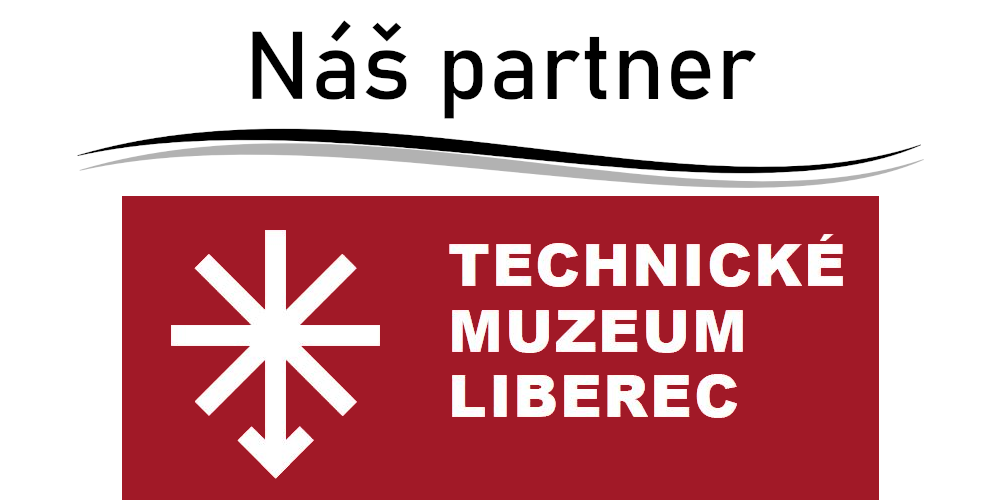American long-range bomber Boeing B-17F Flying Fortress (Memphis Belle) COBI 5749 - Executive Edition WWII 1:48
Model kit of the famous American bomber Boeing B-17F Memphis Beauty from the 8th Army of the USAAF. The assembled model has adjustable control surfaces, retractable landing gear, an opening bomb bay, rotating propellers and rotating anti-aircraft turrets. The package includes a Captain Robert K. Morgan pilot figure, E. Scott Miller gunner figure, a set of bombs and a description cube. The kit is produced under the official license of The Boeing Company.
Show more
0 %
(0 Ranking)
2 222 Kč
pcs
Add to Cart
In stock - ready to ship (3 pcs)
| List Number: | COBI-5749 |
| EAN: | 590221057497 |
| Warranty: | 24 months |
| Manufacturer: | COBI |
| Loyalty Points: | 14 |
| Price excluding VAT: | 1 836,00 Kč |
Description
Parametres
Files and Links
Discussion
Reviews

You know that:
- The machine first flew on 28 July 1935.
- It was during the first flight that it was decided that chief designer Edward C. Wells and Gifford Emery had created something extraordinary, as the machine exceeded almost all expected parameters.
- US Army officials were so surprised by the bomber's performance that they ordered 65 machines for the USAF before the competition for the new bomber was judged.
- The Seattle Times reporter Richard Smith also watched the first flight and was so impressed by the size and weaponry of the bomber that he called it "The Flying Fortress" in his article. The designation was so apt that it made its way into many official records.
- The early versions also had a few imperfections, but from the E series onwards it was an extraordinary machine that was hard to find a rival.
- The aircraft was already equipped with a super-secret NORDEN bomb sight, which the crew had taken out just before take-off and had to return immediately on their return.
- All the safety measures around the sight were actually unnecessary, because already in 1938 one of the engineers, Herman Lang, had already handed over the documentation to the Germans.
- The inventor of the sight, Carl Norden, invented the principle of precision targeting to save civilian lives.
- Mrs Norden never forgave her husband for creating the sight. To her, it was a weapon of war like any other.
- The B-17 bomber showed extraordinary durability, returning from action heavily damaged, torn apart but still airworthy.
- Of the 1.5 million tons of bombs dropped on Nazi Germany, 640,000 tons were dropped from B-17s.
- Boeing produced 14-16 a day. This rate could not be matched by any adversary's production on the axis of evil.
- A total of 12,731 were produced.
- The price per machine was about $238,329 at the time.
- Today there are about 6 airworthy units around the world.
- This particular bomber of the 8th Air Army, crewed by Captain Robert K. Morgan was one of the first to perform all of the prescribed 25 missions. Many other crews, however, were not so lucky.
- The aircraft was named "Memphis Beauty" after Margaret Polk, R. Morgan's girlfriend, who was from Memphis. The original name considered was "Little one", but the crew, after seeing the movie "Lady for a Night" in which the main character owns a ship named Memphis Belle.
- Note that the girl has a red swimsuit on the right side of the fuselage and a blue one on the left side, just as she did on the real plane.
Technical parameters:
- dimensions: wingspan 31.6 m, length 22.8 m, height 5.9 m
- empty weight 16 206 kg, take-off weight 25 628 kg
- power plant 4 x Wright R-1820-97 radial engines, each with 895 kW
- cruising speed 360 km/h
- maximum speed 520 km/h
- climb rate 4,6 m/s
- maximum flight level 11 430 m
- fuel tank capacity 9 530 l
- range 3 500 km, maximum range with additional tanks 7 113 km
- armament 11x M2 Browning 12.7 mm machine gun + 3 600 kg of aerial bombs
- crew of 12
From the memoirs of B-17 Memphis Belle crewman Charles B. Leighton:
"I was a navigator on a B-17F designated Memphis Belle, which was the first American bomber to complete 25 missions over Europe and return home. It was a great adventure, but also a great ordeal. I watched my buddies fall out of the sky, saw German fighters and anti-aircraft guns chase us, and saw us destroy enemy targets. We were proud of our work, but we also feared for our lives. Every mission was like a lottery, you never knew if you were coming back. But in the end, we made it and became a legend."
Assembly instructions
| Version (series) | 07/2023 |
|---|---|
| Recommended age | 10+ |
| Number of pieces | 1376 pcs |
| Package weight | 1860 g |
| Scale | 1:48 |
| Number of figurines | 2 pcs |
| Box dimensions | 60 x 32 x 7,5 cm |
| Dimensions after assembly | 66 x 49,5 x 14 cm |
| Contains luminous blocks | No |
| Material | Plastic |
| Collection | World War II |
| Compatible with other brand of kits | Yes |
Discussion is empty.
There is no review for product yet















































